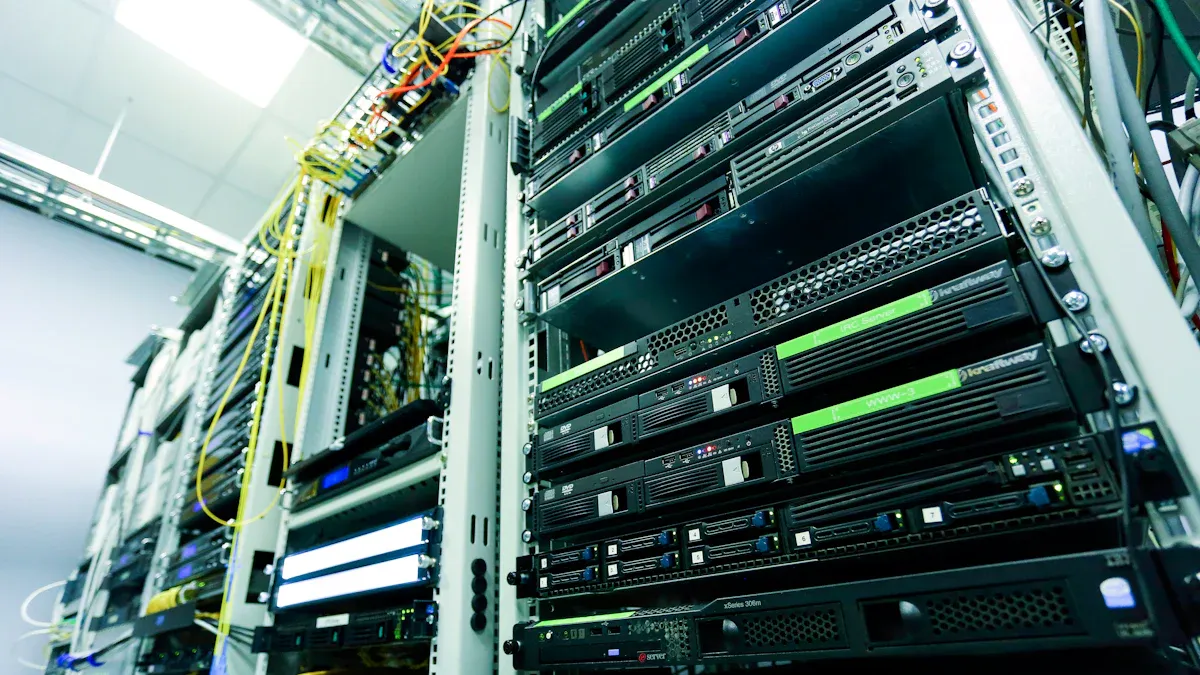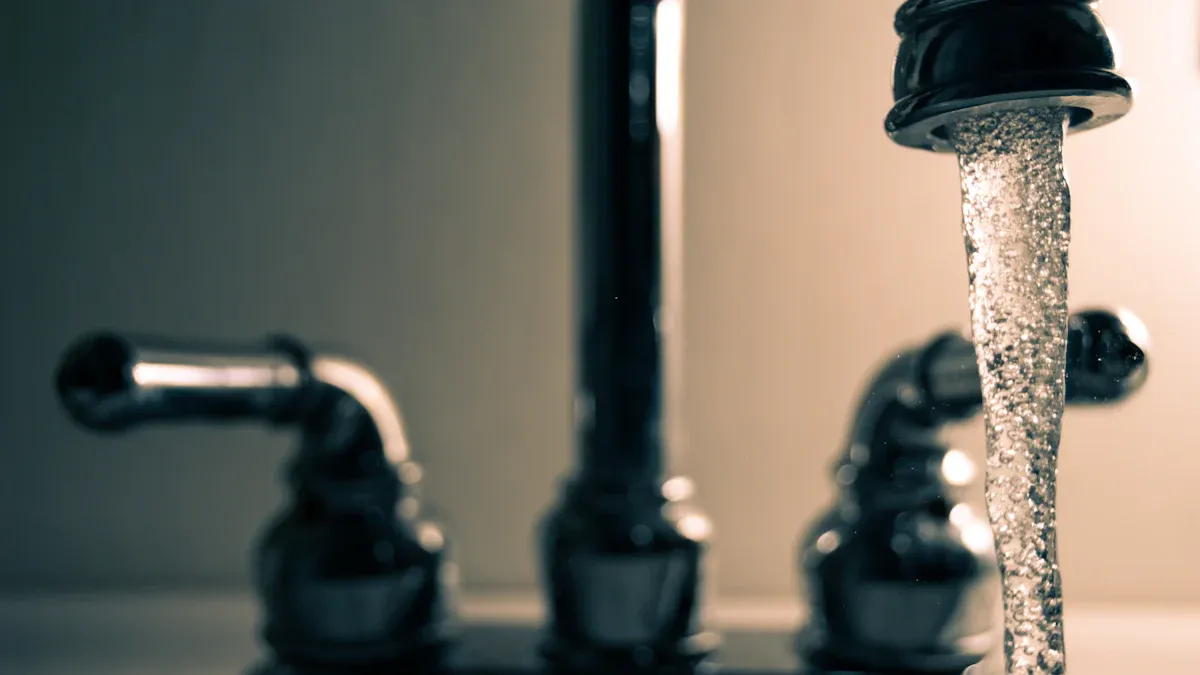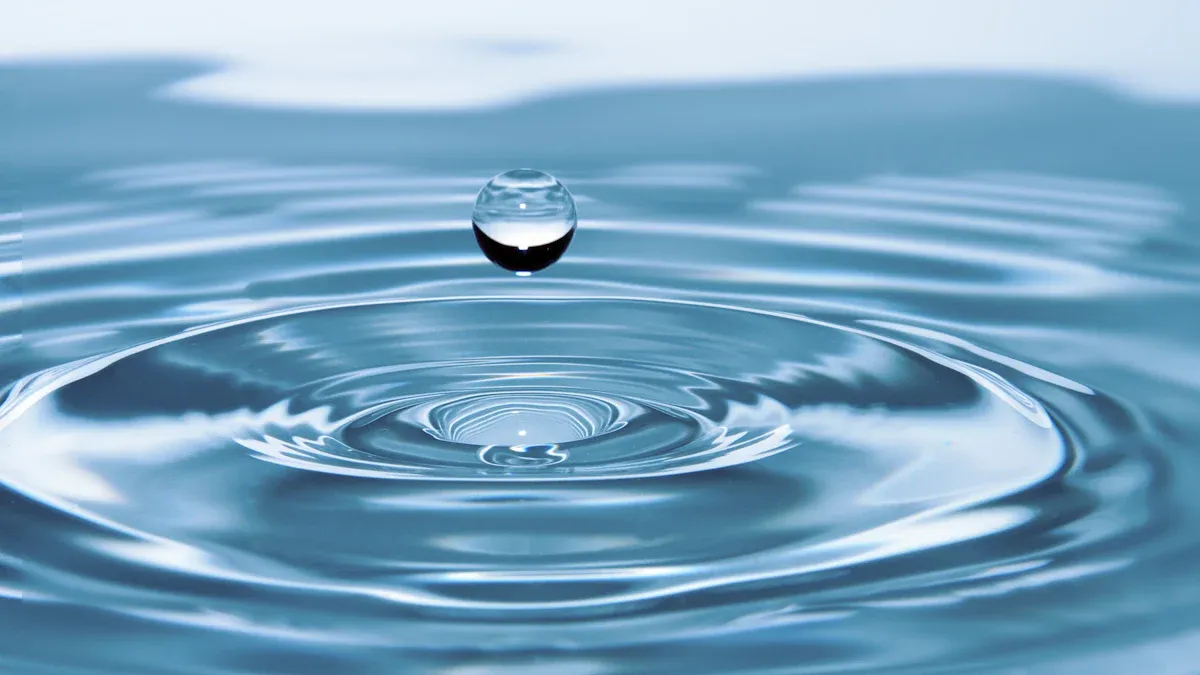How to optimize energy and water use in data center cooling systems

Optimizing energy and water in data centers relies heavily on advanced Data Center Cooling technologies and smart planning. Cooling systems account for about 40% of a data center’s power consumption. Effective Data Center Cooling not only saves money but also benefits the environment. Major companies like Google and Microsoft implement smart Data Center Cooling solutions. This approach reduces their energy bills, lowers pollution, and extends the lifespan of their equipment. Chemours’ liquid cooling technology can save up to 90% of cooling energy. These efforts demonstrate that green Data Center Cooling supports both environmental sustainability and business success.
Key Takeaways
Check how much energy and water you use often.
This helps you see where to get better and set goals.
Use smart sensors and AI to watch temperature and airflow.
These tools help find hot spots and stop waste.
Try using both air and liquid cooling to save energy and water.
This works well in places that are hot or very wet.
Make the room a little warmer if it is safe.
Use hot and cold aisles to move air better and save power.
Reuse water and use dry cooling when you can.
Add renewable energy to help the planet and save money.
Checking Data Center Cooling
Important Numbers and Goals
First, workers must measure how much energy and water they use. This helps them know where to start making things better. They use special numbers to see how well the cooling works. ASHRAE gives rules for safe temperatures and humidity. These rules help keep equipment working and save energy. The table below shows these ASHRAE rules:
Equipment Class | Temperature Range (°C) | Humidity Range (%) | Notes |
|---|---|---|---|
Recommended (Long Term) A1-A4 | 18 to 27 | 20 to 80 | Best for keeping equipment safe and saving energy |
Allowable (Short Term) A1 | 15 to 32 | 20 to 80 | Lets systems work in more conditions |
Allowable (Short Term) A2 | 10 to 35 | 20 to 80 | Some equipment can handle these wider ranges |
Allowable (Short Term) A3 | 5 to 40 | 8 to 85 | Works in even more types of weather |
Allowable (Short Term) A4 | 5 to 45 | 8 to 90 | Most flexible, but needs careful watching |
Workers also use PUE and WUE to check how well they use power and water. These numbers help them spot problems and set new goals.
Watching with Tools
Modern cooling uses smart tools to watch everything. Workers put sensors everywhere to check temperature, humidity, and airflow. These sensors find hot spots and help cool only where needed. Computers look at the data right away and help fix problems fast. Ecolab’s 3D TRASAR uses AI to watch coolant and flow, saving water and energy. Newer CRAC systems and smart software find problems early and stop waste.
Tip: Smart meters can send alerts. These alerts help people use less energy, saving 5%-10%.
Finding Problems
Workers must check cooling systems often to find waste. Sensors make maps to show hot spots. Then, they can send more cool air only where it is hot. Some systems switch between water and air cooling to save water. Amazon checks water and buildings before building new centers. This helps them save over 530 million gallons of water each year in more than 120 U.S. centers. Planning ahead helps both the planet and the company.
Cooling Method | Efficiency Improvement at 30°C | Water Consumption (m³/h) | Payback Period (years) | Notes on Effectiveness |
|---|---|---|---|---|
Media Evaporative Cooling | 36 | 2.7 | Saves most money in dry places | |
Fogging Systems | 1.7% | 16.5 | N/A | Uses some water, works okay |
Absorption Chillers | 2.6% | 15 | 6.8 | Works best in wet places |
By following ASHRAE rules, watching temperature and humidity, and fixing hot spots, workers can make cooling better and run centers well.
Cooling Technologies and Design

Hybrid Air and Liquid Cooling
Hybrid cooling uses both air and liquid to cool servers. Air removes most heat. Liquid cools the hottest parts. This mix helps save energy and water. It also makes cooling systems work less. Hybrid systems lower energy and water use.
Metric | Hong Kong Data Center | Singapore Data Center | Additional Notes |
|---|---|---|---|
Less extra cooling time | 55% | Needs less machine cooling | |
System efficiency (COPsys) | 30.7 | 14.5 | High cooling efficiency |
Better than old systems | 58.3% and 36.4% | N/A | Works better than old ways |
Cooler air supply | 1.7 °C | N/A | Less cooling needed |
Cooling type | Hybrid LD-IEC + IEC | Hybrid LD-IEC + IEC | Uses sun heat for longer cooling |
PUE and WUE effect | Lower PUE and water use | N/A | Saves energy and water |
Hybrid cooling lowers PUE and WUE. Closed-loop liquid cooling saves more energy and water. Some centers use almost no water with these systems. Good airflow in racks also helps save energy.
Note: Cooling can use up to 40% of energy. Hybrid cooling is better for hot, wet places.
Immersion and Direct-to-Chip Cooling
Immersion cooling puts servers in special fluid. The fluid takes away heat fast. Direct-to-chip cooling uses cold plates on chips. Water moves through plates to cool them. Both ways work better than air cooling.
Cooling Type | Energy Use | Good Points | Things to Think About |
|---|---|---|---|
Air Cooling | Simple, easy setup | Uses lots of energy; not good for big jobs | |
Direct-to-Chip | PUE ~1.1 or less; cooling <10% power | Cools at the source; water works well; supports 70–100 kW per rack | Needs special water system; must care for plates |
Immersion | PUE ~1.1 or less; higher power | Keeps temps even; fits more servers; cools well | Needs special servers; must handle fluids |
Air cooling cannot keep up with new tech. Most experts now think immersion cooling is needed. Castrol helps with liquid cooling by giving support and checking fluids. This keeps cooling strong and stops problems. Immersion and direct-to-chip cooling help centers use less energy and fit more servers.
New cooling systems use boiling to move heat away. This saves energy and cools better than air. These ideas help centers lower PUE and stay green.
Free Cooling and Dry Cooling
Free cooling uses outside air to cool servers. It works best in cool or dry places. Dry cooling uses air only, not water. This is good where water is hard to get.
Evaporative cooling saves energy in dry places but uses water.
Dry cooling uses no water but needs more fans, so it uses more energy.
Cooling towers use less energy but more water. Dry coolers use more power but no water.
The weather decides which cooling is best.
As the world gets hotter and water is less, dry cooling is used more. Experts say airflow and climate are now very important. Centers must pick the right cooling for their area.
Advanced Controls and Automation
Smart controls help cooling work better. Software checks server heat and performance all the time. It moves work away from hot servers. This stops heat from building up. Virtualization spreads work out and keeps air moving.
DCIM software watches temps, sends alerts, and warns about hot spots. This lets workers fix problems early. Close-coupled cooling puts coolers near hot spots. This cools hot areas fast and saves energy. It also makes air move less, saving more energy.
Thermal storage saves cool energy for busy times. This cuts costs and balances power use. Big companies use these ideas. Facebook uses outside air to cool. eBay uses hot water cooling. Google uses thermal batteries to save power and help the planet.
Tip: Easy-to-build racks, green materials, and smart racks with sensors help save energy. Good cable and airflow management keeps air moving and cooling strong.
Water and Energy Conservation

Water-Saving Strategies
Data centers need to use less water. Many now pick dry cooling. Dry cooling uses air, not water, to cool things down. This is good where water is hard to find. It also helps meet ASHRAE’s green rules. Some centers use greywater from sinks or showers. They clean this water and use it again. Rainwater can also be saved and used for cooling. Workers collect rain and store it for later. Water recycling lets centers use water more than once.
Note: Using rain and recycled water saves money and meets ASHRAE rules.
Some centers share water systems with others. This idea comes from mining. Sharing helps everyone use water better. It also saves money and helps the community. Centers can use waste heat to warm nearby homes. This cuts pollution and helps local people. These steps help centers use less water and stay green.
Energy Efficiency Measures
Workers use many ways to save energy. Raising the temperature means less cooling is needed. ASHRAE says higher temps are safe. Good airflow stops hot and cold air from mixing. This keeps equipment at safe temps. Hot and cold aisles guide air the right way. This makes cooling work better and saves power.
Hybrid cooling uses both air and liquid. This helps with new, powerful computers. It saves energy and keeps things running smoothly. New cooling tools, like liquid cooling, waste less energy. Smart tools watch for hot spots. They help fix problems fast. Digital twins and smart checks stop breakdowns and keep cooling strong.
Waste heat can be used again. Heat exchangers and pumps move heat to where it is needed. Sweden uses this heat to warm buildings. This saves energy and helps the planet. Training workers on airflow also saves power. Checking and resizing cooling systems stops waste.
Practice | Benefit | Example Use Case |
|---|---|---|
Higher temps | Less cooling needed | ASHRAE says it is safe |
Hot/cold aisles | Better airflow, saves energy | Used in new centers |
Hybrid cooling | Saves energy, flexible | For AI and big racks |
Waste heat use | Reuse energy, less pollution | Heats homes in Sweden |
Smart tools | Find problems early | DCIM, thermal cameras |
Renewable Integration
Renewable energy helps cool data centers. Solar and wind power run cooling systems. This means less fossil fuel is used. Some centers use AI to manage energy. AI predicts cooling needs and saves power. This lowers pollution and helps the planet.
BIM helps design better cooling layouts. It stops hot spots and follows ASHRAE rules. Digital twins and smart checks help fix problems before they grow. These tools help centers follow rules and save water.
Tip: Using green energy and saving power makes centers strong and green.
These ideas lower costs and help the earth. They also help centers meet ASHRAE’s rules for cooling and being green.
Implementation and Data Center Sustainability
Step-by-Step Roadmap
A clear plan helps teams take action easily. Experts suggest these steps for greener data centers:
Test air cooling systems with digital models to improve them.
Try liquid cooling in virtual setups before using it for real.
Fix old systems to work better before adding new ones.
Switch to liquid cooling to save water and manage heat better.
Use cooling systems without water to save up to 74% energy.
Add EPA-approved power systems and microgrids for clean energy.
These steps help data centers follow ASHRAE rules and stay eco-friendly.
Teamwork and Communication
Good teamwork makes upgrades successful. Operators, engineers, and managers must work together. Regular meetings keep everyone updated on changes. Training teaches staff about new cooling methods and ASHRAE rules. Open talks build trust and ensure everyone supports green goals.
Real-Life Examples
Big companies show how it’s done. Google uses AI to control cooling and runs on clean energy all day. Microsoft uses smart controls to save energy. Amazon checks water supplies before building to save water. These companies prove that smart choices make data centers greener.
Keep Improving
Improving systems all the time keeps them working well. Teams use smart tools to watch cooling performance. Machine learning helps plan better cooling schedules. Data helps teams make quick fixes when needed. Regular checks and updates follow ASHRAE rules and keep systems green.
Tip: Watching data closely helps find problems early and keeps cooling systems working their best.
Data center workers can make cooling better by checking how much energy and water they use. They should pick tools that save power and water. Using smart controls helps save even more. These actions help save money and protect the planet. Workers need to look at systems often and try new ideas. Working together helps everyone reach green goals.
Begin now—look at your cooling system and plan changes for a better, greener data center.
FAQ
What is PUE and why does it matter?
PUE means Power Usage Effectiveness. It shows how much energy is used for computers versus cooling. A lower PUE is better. It means the center saves more energy. Workers use PUE to see if they are saving power. They also use it to set new goals.
How can data centers save water in cooling?
Data centers can use dry cooling, which uses air instead of water. They can clean and reuse water from sinks and showers. Rainwater can be collected and used too. Some centers share water with other buildings. These steps help save water and money.
Why do data centers raise temperature setpoints?
Raising the temperature lets cooling systems work less. Equipment can still run safely at higher temps. ASHRAE says this is okay. This saves energy and lowers costs. Servers stay safe while using less power.
What role does airflow management play in cooling?
Good airflow keeps hot and cold air apart. Hot aisles and cold aisles guide air where it should go. This stops air from mixing. It helps cooling work better. Good airflow saves energy and protects equipment.
Can renewable energy power data center cooling?
Yes, data centers can use solar or wind power for cooling. Green energy cuts pollution and uses less fossil fuel. Smart controls help match cooling to the green energy available.
See Also
Proven Strategies To Enhance Walk-In Chiller Performance
Stepwise Approach To Boost Energy Efficiency Using ARKREF CO₂
Optimizing Chiller And Compressor Function In ARKREF CO₂ Systems
Eco-Friendly Cooling With CO2 Refrigeration Technology
Comparing Energy Efficiency Between ARKREF CO₂ And Conventional Systems

